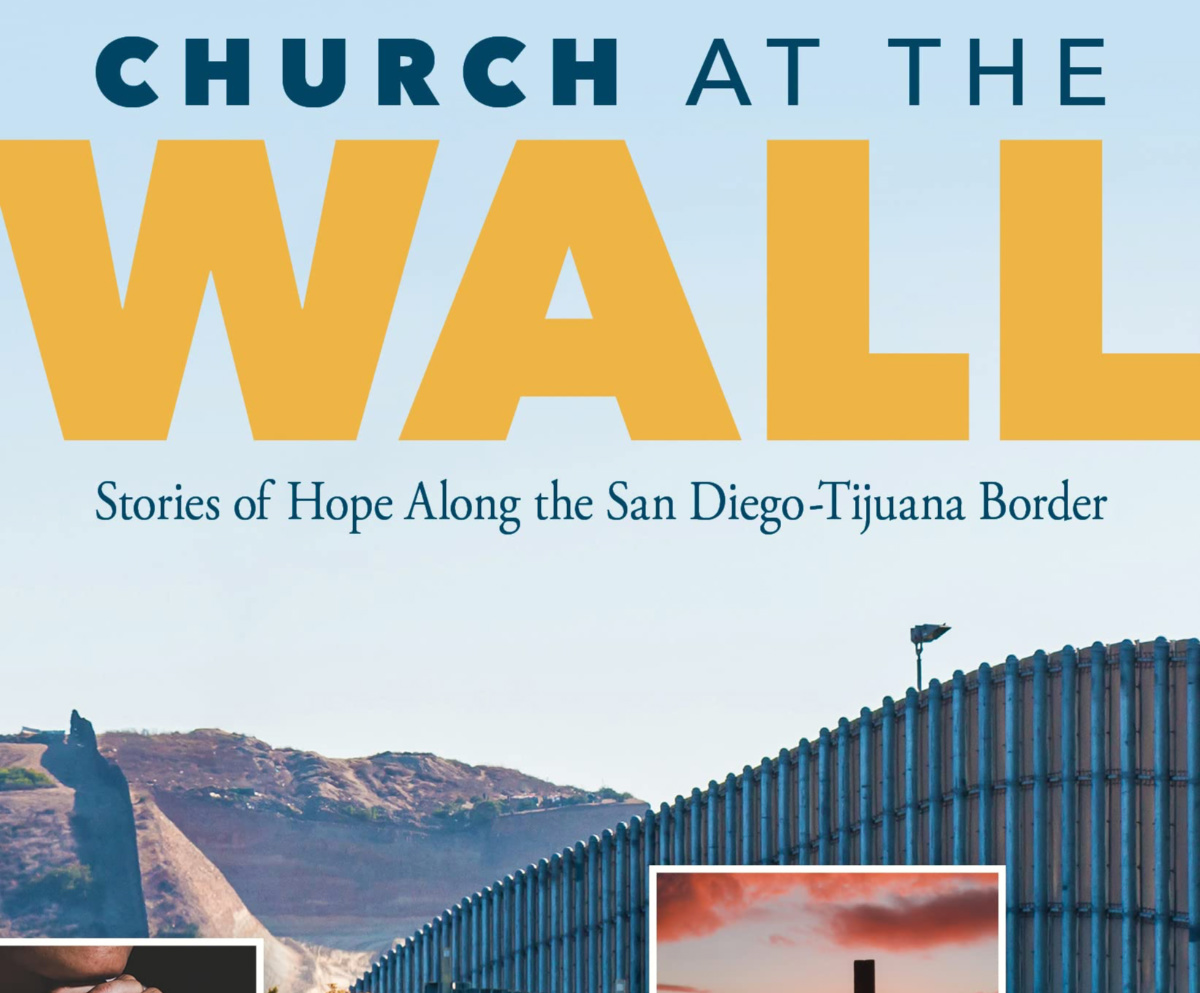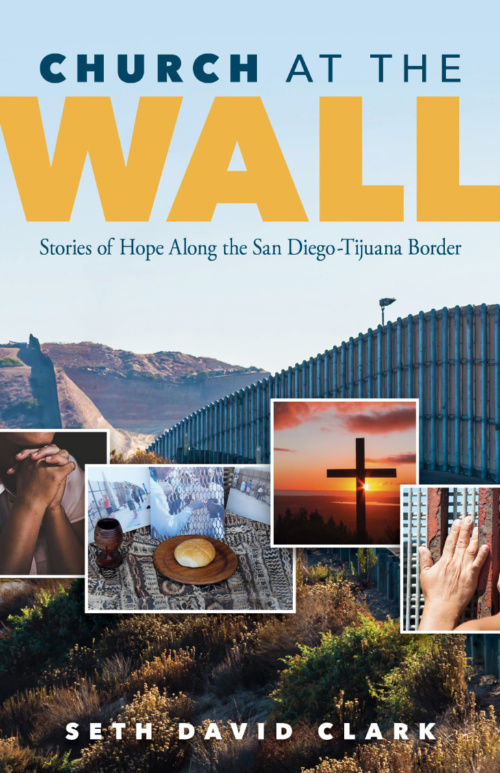
DAVID ADAMS reads a book about a rather unusual church at the US-Mexico border…
Seth David Clark
Church At The Wall: Stories of Hope along the San Diego-Tijuana Border
Judson Press, Valley Forge, Pennsylvania, US, 2021
ISBN-13: 978-0817018306

“This book is a collection of reflections on the church – which is in this case certainly not a building (there isn’t one), but a body of people – along with theological reflections on their stories, the church, and immigration policies and practices more broadly.”
Down on the border between the US and Mexico can be found one of the world’s more unusual churches – the Border Church (in Spanish – La Iglesia Fronteriza), referred to in the title as the ‘Church At The Wall’.
Spanning the line which divides the two nations, this open-air church is a congregation of two halves – one of which, based in “International Friendship Park” on the US side, operates under the strict regulations set down by the US Border Patrol – while the other, based in Tijuana in Mexico, operates more freely as a ministry to displaced people who are living in the area. It’s said to be the only place in the world where communion is openly celebrated each week on both sides of a militarized international border.
The origins of the Border Church go back to the early 2000s when Christian ministers of the Weslyan tradition, including John Fanestil who went on to become the founding pastor of the church, started the practice of holding occassional acts of communion to, in author Seth David Clark’s words, “highlight the difference between God’s call to unite and the US government’s actions to divide and separate”.
A community of Christians moved that practice to a weekly model in 2011 and, “from there sprang an active community of faith: those in Tijuana who minister with and to local displaced persons, a handful of faithful hikers that make it to the US side of Friendship Park every week (when there aren’t other human or nonhuman factors keeping it shut) and a growing online English-speaking community in the US and beyond.”
The church on the Mexican side, though small, serves up to a hundred meals each Sunday to those who come and as a community has, according to Clark, “impacted thousands of separated families, migrants, deportees, down-and-out Tijuanenses, and travellers from North America who come to see this beautiful community of faith and action for themselves”. Sadly, however, access to Friendship Park was blocked in recent years and remains so – leading to the church connections to be made, not so unusually during this time of COVID-19, via the internet.
As well as being lead pastor at First Baptist Church of National City in California and an adjunct faculty member at Pacific Theological Seminary, the author – Seth David Clark – is director of the US pastoral team for the Border Church. This book is a collection of reflections on the church – which is in this case certainly not a building (there isn’t one), but a body of people – along with theological reflections on their stories, the church, and immigration policies and practices more broadly.
We rely on our readers to fund Sight's work - become a financial supporter today!
For more information, head to our Subscriber's page.
There’s a lengthy chapter featuring photographs of Maria Theresa Fernandez, a “photodocumentarian” whose images are used to spark conversations, among other things, about justice and immigration laws and different theological perspectives on the role of communion in the church. There’s another which follows the tragic story of Karla, a Christian woman who fled the Honduras for the US after her family were killed in one of the numerous migrant “caravans” which have made headlines over the past couple of years and who was removed from the US to Tijuana.
There’s also the story of Tania, a mother who came to the US from Mexico as a child but, thanks to what appears to be a mistake with her papers, was later deported back to Mexico as an adult (before DACA became the law of the land) where she now lives in Tijuana, separated from her teenaged daughter who lives in LA. And we also hear the voice of Guillermo Navarrete, the lay pastor on the Mexican side of the “one-wall church”, talking about how he became involved in what he describes as “not a normal church”, as well as that of Dan Watman, a non-Hispanic US citizen who now lives in Tijuana and works with groups helping migrants, and Mexican-born Robert Vivar recovering addict who has twice been deported from the US and like Watman, now lives in Tijuana.
With first-hand insights into the lives of those caught up in what are often unjust systems governing the movement of people and a deep theological examination of how the Christian faith engages with the issues that raises, this book is an important window into the issue of migration from a Christian perspective. While it’s reflections are based around the experiences and the particular situations of those who attend the Border Church, the stories and reflections made upon them will be of interest to anyone who interested in exploring how God’s basileia – His Kingdom – relates to migrants.





